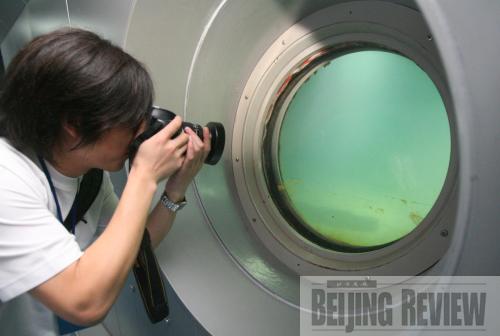|
Crystal clear viewing
According to Huang Dejian, curator of the museum, the materials used to build the viewing cabin are the same as that of submarines. To ensure visitors see the inscriptions more clearly, the water surrounding the ridge is required to be clearer than drinking water, Huang said in a live broadcast on CCTV on May 18. He also said that more than 10,000 energy-saving lamps are installed around the ridge in the water to ensure ease of viewing. Visitors can also appreciate the inscriptions more closely through a touch computer screen that can adjust angles of video cameras installed in the water. Apart from this, video materials are also provided.
Huang also said that there is a no-shipping and no-anchoring zone within a 10,000-meter radius of the museum, which ensures it will not be affected by ships passing by. The anti-collision pier built on the upper reaches of the project can resist the collision of large ships weighing over 10,000 tons.
|
 |
|
A ROOM WITH A VIEW: A visitor at one of the portals under the Yangtze River (CFP) |
Currently, there are three ways of viewing the inscriptions: one is that visitors watch the inscriptions through computer screens in the exhibition room on land, the second is that visitors go into the annular viewing cabin, and the third is that select visitors, mostly professionals and researchers, can dive down to the ridge and observe the cultural heritage directly.
At the end of 2006, China applied to have the Baiheliang listed as a world cultural heritage site.
Shan Jixiang, Director of the State Administration of Cultural Heritage, said at the opening ceremony of the museum that the project was the epitome of the protection of the cultural relics of the Yangtze River. Because of the Three Gorges Project, 1,087 cultural sites were included in a list of cultural relic protection plans throughout the country. |
